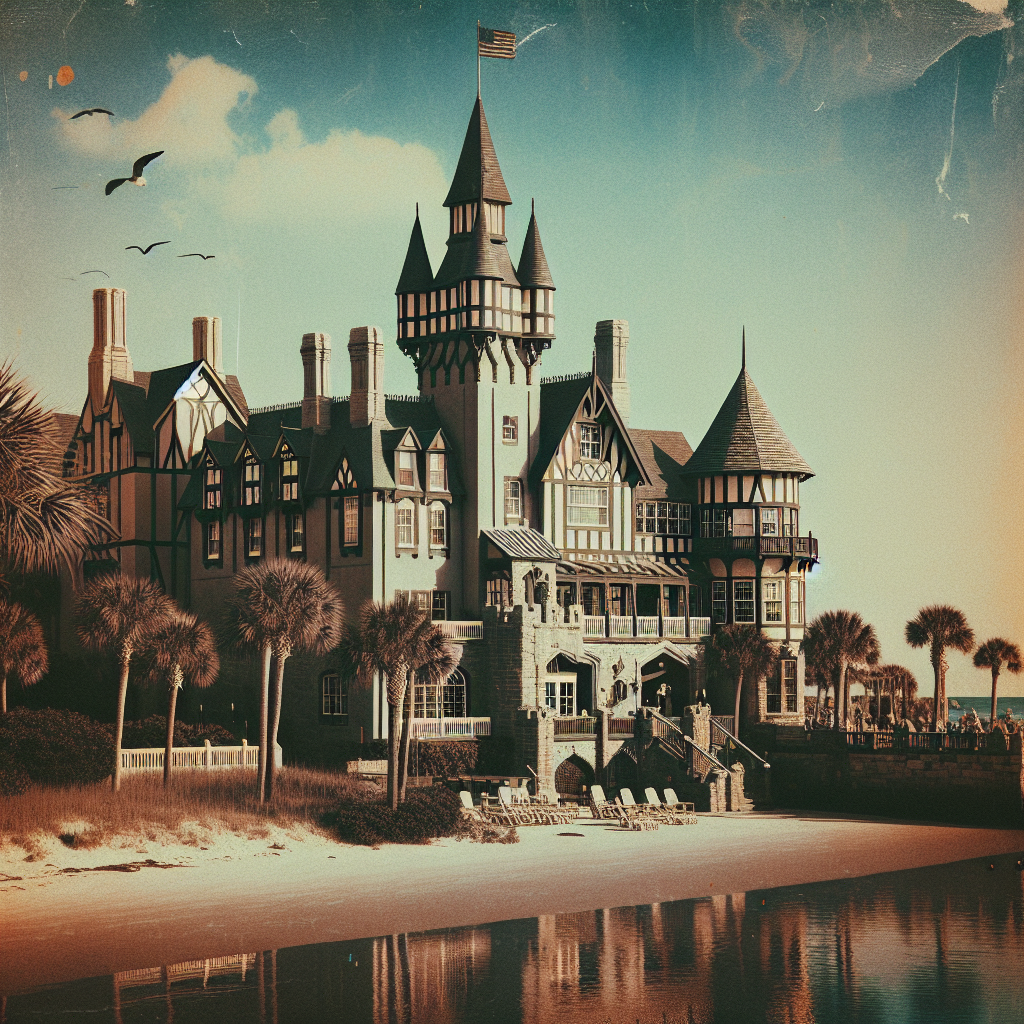Introduction
In my experience with historic sites in Myrtle Beach, I’ve found that exploring these locations offers a uniquely enriching way to connect with the area’s rich cultural past. When I first started researching the historic sites in Myrtle Beach, I was amazed at how much history is tucked away, waiting to be discovered. I want to share what I’ve learned because I believe everyone should experience the stories and significance behind these remarkable sites.
From what I’ve learned, the historic sites in Myrtle Beach are not just relics of the past—they’re living testaments to the city’s evolution. Whether you’re a history buff or simply curious about the local heritage, I think you’ll find that these sites add a meaningful layer to your visit. I’ve personally found that walking through these locations makes history feel real and tangible, and I hope this guide helps you uncover the same sense of wonder I’ve experienced.
Discovering the Historic Sites in Myrtle Beach
Historical Landmarks That Define Myrtle Beach
In my journey to explore historic sites in Myrtle Beach, I discovered that the city is home to several landmarks that tell fascinating stories. One of my favorites has been the Hopsewee Plantation, a beautifully preserved example of early South Carolina history. From what I’ve learned, this plantation offers insight into the antebellum South, and I highly recommend taking a guided tour if you want to truly appreciate its significance.
Another site that left a deep impression on me is the Atalaya Castle. I’ve found that walking around this Moorish-style structure feels like stepping into a fairy tale, and it’s remarkable to think about the history behind its construction during the 1930s. I believe that visiting these historic sites in Myrtle Beach provides a vivid window into the region’s diverse past, from colonial times to modern development.
Museums and Cultural Centers in Myrtle Beach
From my research, I’ve discovered that Myrtle Beach also boasts several museums that are essential parts of its historical landscape. The South Carolina State Museum, for example, houses extensive exhibits on local history, including Native American artifacts and colonial relics. I’ve found that spending a few hours exploring these exhibits offers valuable context that enhances my understanding of the historic sites in Myrtle Beach.
Additionally, I recommend visiting the Myrtle Beach Colored School Museum and Education Center. I’ve learned that this site is vital for understanding the African American experience in the region. It’s a powerful reminder of the struggles and resilience of the community, and I believe it’s an important stop for anyone interested in the full story behind the historic sites in Myrtle Beach.
The Historic Sites in Myrtle Beach That Left a Lasting Impression
Atalaya Castle: A Moorish Marvel
In my experience, no visit to the historic sites in Myrtle Beach is complete without seeing Atalaya Castle. I’ve found that the architecture alone is captivating, but what truly resonates is the history behind it. Built during the Great Depression by Archer and Anna Huntington, this castle was envisioned as a winter home and art studio. I recommend taking the time to walk through the grounds and imagine what life was like for its original inhabitants.
From what I’ve learned, Atalaya is more than just a castle; it’s a symbol of perseverance and artistic vision. I believe that experiencing this site allows visitors to connect with a slice of Myrtle Beach’s creative spirit and historical resilience. I’ve also enjoyed attending the seasonal events held here, which bring the history to life with reenactments and art displays.
The Hopsewee Plantation: A Glimpse into the Past
Another historic site in Myrtle Beach I highly recommend is Hopsewee Plantation. I’ve discovered that this site offers a rare look into plantation life in South Carolina, and I found the guided tours particularly enlightening. The original slave cabins and the towering magnolia trees surrounding the estate make it feel like stepping back in time.
My experience with Hopsewee has shown me how vital it is to preserve these sites for future generations. I believe that understanding the history of slavery and agriculture in the region is essential to grasping the full story of Myrtle Beach. Visiting here helped me appreciate the complex history that shaped this vibrant coastal city.
Hidden Gems Among the Historic Sites in Myrtle Beach
The Museum of Myrtle Beach History
In my opinion, one of the most underrated historic sites in Myrtle Beach is the Museum of Myrtle Beach History. I’ve found that it’s packed with fascinating exhibits on the city’s development, from its humble beginnings to its current lively scene. The museum’s local photographs and memorabilia really helped me see the city’s evolution through the decades.
I recommend dedicating some time to explore this museum. From my experience, it’s a treasure trove of stories and artifacts that deepen your appreciation for the historic sites in Myrtle Beach. It’s a perfect starting point for anyone wanting to understand the city’s cultural roots before venturing out to other landmarks.
Historic Churches and Religious Sites
Another hidden gem I’ve discovered are the historic churches scattered throughout Myrtle Beach. I’ve visited the First Presbyterian Church, which dates back to the early 1900s, and I was struck by its architecture and historical significance. These churches often served as community hubs, and I think they’re integral to understanding the local history.
From what I’ve learned, many of these sites offer tours and occasional events that highlight their importance in shaping Myrtle Beach’s community. I believe that exploring these historic sites in Myrtle Beach provides a more intimate connection to the city’s cultural heritage.
Preserving Our Heritage: The Significance of These Historic Sites
In my experience, preserving historic sites in Myrtle Beach is crucial for maintaining the city’s identity and educating future generations. I’ve learned that many of these sites are protected by local and state efforts, but ongoing community support is essential. Visiting these sites helps me appreciate the effort that goes into their preservation and encourages me to advocate for their continued conservation.
From what I’ve observed, these sites are more than just tourist attractions—they’re vital links to our shared history. I believe that by exploring and supporting the historic sites in Myrtle Beach, we ensure that their stories remain alive for years to come. It’s a responsibility I take seriously, and I think everyone should do their part in preserving our cultural heritage.
References and Resources
Throughout my research on historic sites in Myrtle Beach, I’ve found these resources incredibly valuable. I recommend checking them out for additional insights:
Authoritative Sources on historic sites in Myrtle Beach
-
South Carolina State Museum
scmuseum.orgA comprehensive resource for understanding South Carolina’s history, including exhibits on local heritage and historic sites in Myrtle Beach.
-
Visit Myrtle Beach Official Site
visitmyrtlebeach.comProvides guides and updates on historic sites and cultural events happening around Myrtle Beach, perfect for planning your visit.
-
National Park Service
nps.govOffers detailed information on historic preservation efforts across the U.S., including South Carolina’s key sites.
-
National Trust for Historic Preservation
heritagepreservation.orgProvides resources on preservation initiatives and the importance of maintaining historic sites like those in Myrtle Beach.
-
History Channel
history.comEngaging articles and documentaries that provide broader context on American and regional history.
-
South Carolina Parks
southcarolinaparks.comDetails on state parks and historic sites, including preservation efforts and visiting tips.
Frequently Asked Questions
What are the most popular historic sites in Myrtle Beach to visit?
In my experience, the most popular sites include Atalaya Castle, Hopsewee Plantation, and the Myrtle Beach Colored School Museum. These locations offer rich historical insights and are well-preserved, making them must-see destinations for anyone interested in the area’s history.
How can I best experience the historic sites in Myrtle Beach?
I recommend taking guided tours whenever available, as they provide detailed stories and context that enrich your visit. Additionally, I suggest planning your visits around special events or festivals that highlight local history, which can deepen your understanding and enjoyment.
Are there any lesser-known historic sites in Myrtle Beach worth exploring?
Absolutely! I’ve found that the Myrtle Beach Railroad Museum and some of the old church sites offer fascinating stories without the crowds. These hidden gems provide a more intimate experience and a different perspective on the city’s history.
Why is it important to preserve the historic sites in Myrtle Beach?
From my perspective, these sites are vital for understanding our collective past and maintaining the cultural identity of Myrtle Beach. Preservation efforts ensure that future generations can experience and learn from these historical treasures, which I believe is essential for a community’s continuity and pride.
Conclusion
In conclusion, my research on historic sites in Myrtle Beach has shown me how much history is embedded in this vibrant coastal city. I hope this guide helps you appreciate the depth and diversity of the stories behind these sites, from grand castles to humble plantations. Based on my experience, exploring these locations not only enriches your visit but also connects you to the rich cultural tapestry that makes Myrtle Beach unique. I encourage everyone to seek out these historic sites in Myrtle Beach and support their preservation so future generations can continue to experience their significance.
Find out more information about “historic sites in Myrtle Beach”
Search for more resources and information:







Comments are closed